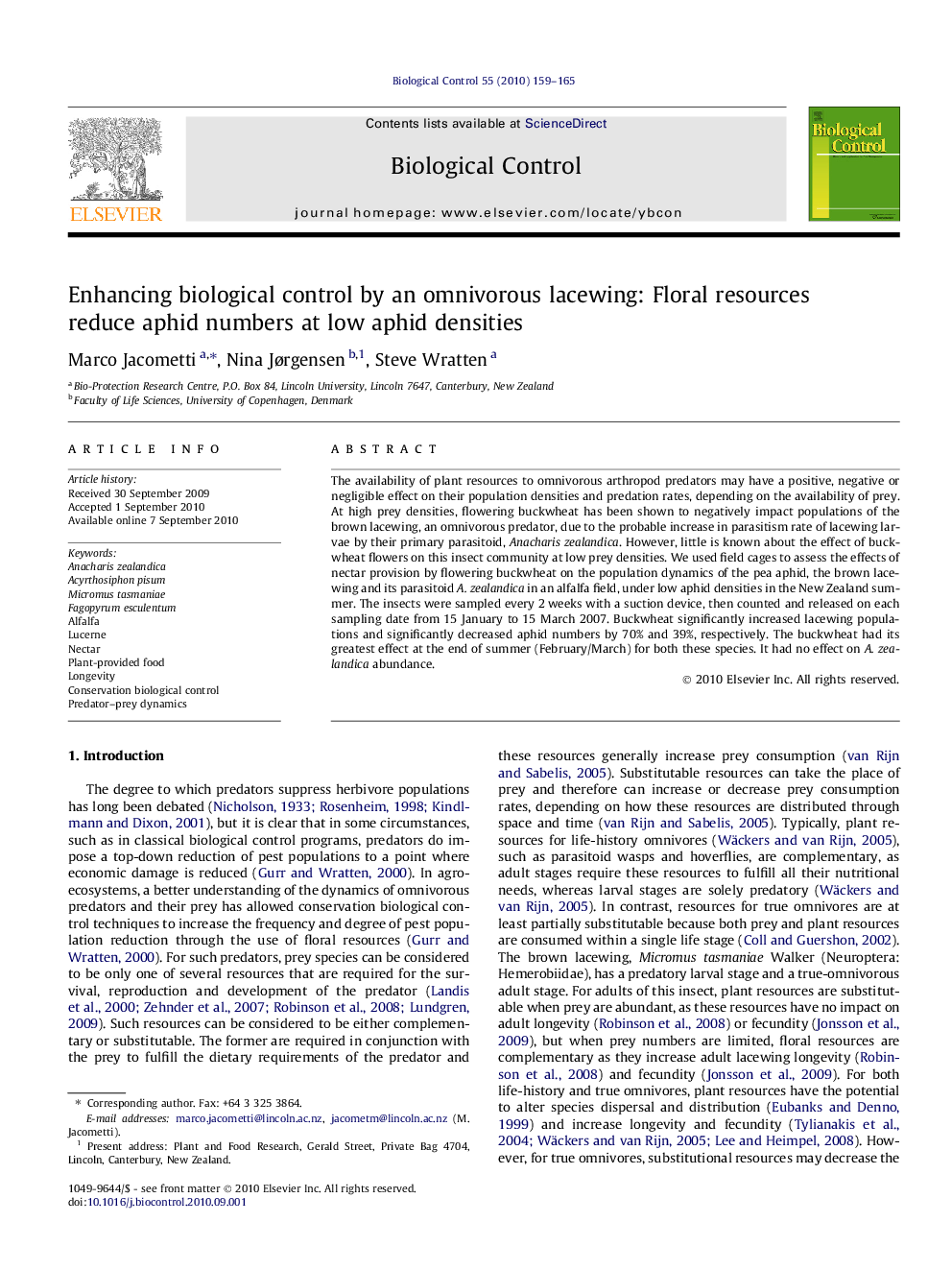| کد مقاله | کد نشریه | سال انتشار | مقاله انگلیسی | نسخه تمام متن |
|---|---|---|---|---|
| 4504453 | 1321094 | 2010 | 7 صفحه PDF | دانلود رایگان |

The availability of plant resources to omnivorous arthropod predators may have a positive, negative or negligible effect on their population densities and predation rates, depending on the availability of prey. At high prey densities, flowering buckwheat has been shown to negatively impact populations of the brown lacewing, an omnivorous predator, due to the probable increase in parasitism rate of lacewing larvae by their primary parasitoid, Anacharis zealandica. However, little is known about the effect of buckwheat flowers on this insect community at low prey densities. We used field cages to assess the effects of nectar provision by flowering buckwheat on the population dynamics of the pea aphid, the brown lacewing and its parasitoid A. zealandica in an alfalfa field, under low aphid densities in the New Zealand summer. The insects were sampled every 2 weeks with a suction device, then counted and released on each sampling date from 15 January to 15 March 2007. Buckwheat significantly increased lacewing populations and significantly decreased aphid numbers by 70% and 39%, respectively. The buckwheat had its greatest effect at the end of summer (February/March) for both these species. It had no effect on A. zealandica abundance.
Figure optionsDownload as PowerPoint slideResearch highlights
► Flowering buckwheat increased the density of lacewings.
► Increases in lacewing densities resulted in lower aphid densities.
► Lacewing impact on aphids largest when aphid densities are low.
► Buckwheat had no effect on lacewing endoparasitoid densities due to low host availability.
► Results indicate buckwheat should be sown early season when prey densities are low.
Journal: Biological Control - Volume 55, Issue 3, December 2010, Pages 159–165